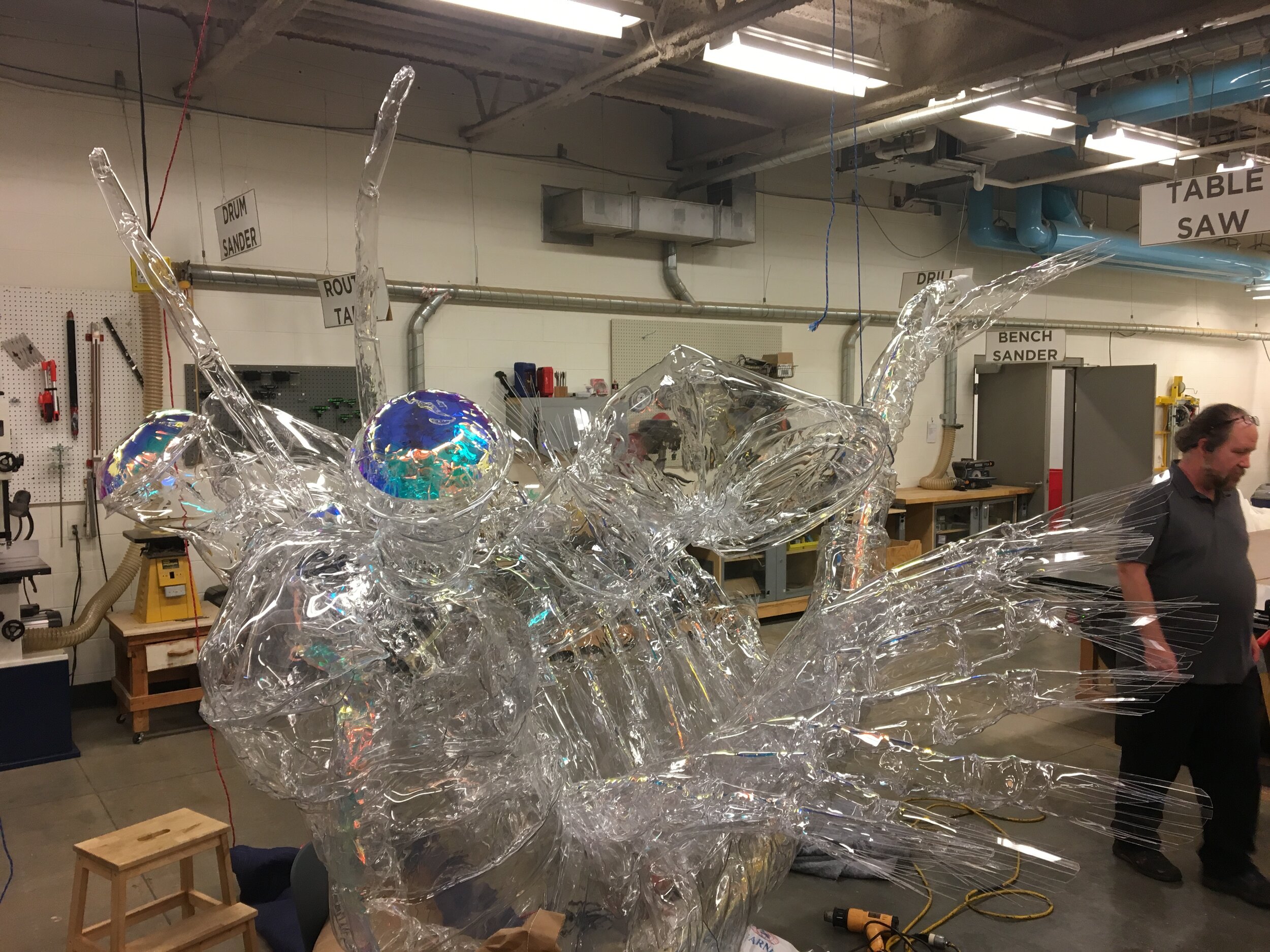
Sea Monkey
On my first visit to the Amazeum I was struck by how fun the water play area looked. Kids playing and figuring things out while splashing around seemed like the perfect place to make a whimsical sculpture about a scientifically unique creature. Sea monkeys are brine shrimp, or fairy shrimp. Sammy the Sea Monkey is a permanent sculpture installed at the Scott Family Amazeum, Benton Arkansas
Sea Monkey assembly
Materials: FDA approved thermoplastic polyester called Polyethylene Terephthalate Glycol (PETG), often used in water bottles. Sammy is made with 100% recycled resin PETG sheets, welded together and shaped using a common heat gun.
They are known for their connection to comic books and main stream media as instant life and just add water pets. Some are even sold in the museum store! Their image has been used in fantastical narratives inspired by the initially misleading comic book advertisements during the 1950s, which displayed sea creatures strangely similar to humans. When it came to how I was going to fabricate the sculpture, I chose a sea monkey because it lent itself to the watery and transparent look of the thermal plastic medium I’ve been experimenting with.
Sammy is a male brine shrimp, because of its two large claspers. Females have no claspers but have egg sacks on their lower backs.
Astronaut
Did you know brine shrimp traveled to the moon and back on Apollo 16 in 1972 and Apollo 17 in 1972, and came with John Glenn on the Discovery in 1998? They live in an environment too toxic for most life, up to 50% salt compared to the ocean which is only 3.5% salt. They swim upside down, breath through their eleven pairs of legs, and are born with one baby eye, then develop two compound eyes on flexible stalks! They have changed little since the Triassic period.
Resilient time traveler
The digestive system of brine shrimp contain a bacterial microbe that produces a special sugar called trehalose, which help brine shrimp survive their ultra-salty environments, as well as the production of eggs or cysts. These cysts are life in a state of suspended animation, and can be dried, boiled, frozen and are almost indestructible. In the 1990’s an oil exploration crew drilled near the Great Salt Lake and pulled up cysts that had been buried for over 10,000 years. They were put into salt water and some hatched!





